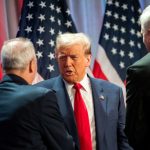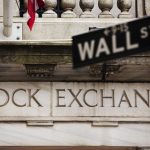
Tesla shares extended their losses on Friday, falling about 4% to trade around $242.
The decline followed a 7.3% drop on Thursday, when the stock closed at $252.40.
Tesla is now down over 35% year-to-date, marking the steepest decline among major technology firms.
The broader market also opened lower on Friday, with the Dow Jones Industrial Average falling 241 points, or 0.6%, the S&P 500 down 0.4%, and the Nasdaq Composite easing 0.2%.
The recent slide comes after a sharp rally on Wednesday when Tesla surged 22.7%—its second-largest one-day gain on record—following President Donald Trump’s announcement of a temporary pause on reciprocal tariffs for non-retaliating countries.
That rally was second only to the 24.4% gain recorded on May 9, 2013, when the company reported its first-ever quarterly profit.
Despite the rebound, Tesla has been under pressure for much of April, losing over 20% since Trump announced sweeping tariffs on imports earlier this month.
Escalating trade tensions between the US and China have added to investor concerns, particularly for automakers like Tesla facing the dual threat of rising costs and weaker demand.
Tesla stops taking new orders in China
The Elon Musk-led company has suspended new orders for its Model S and Model X vehicles in China, according to checks on the company’s website and WeChat mini-program.
The move affects two of Tesla’s premium models, both manufactured in the United States and imported into China, where retaliatory tariffs have sharply raised prices.
The suspension comes on the heels of China’s latest response to President Donald Trump’s tariff hikes.
On Friday, Beijing increased tariffs on US imports to 125%, following Washington’s move to raise duties on Chinese goods to 145%.
Though Tesla has not issued a formal explanation, the timing suggests the decision is a direct consequence of worsening trade relations, which have made US-built vehicles significantly less competitive in the Chinese market.
The added tariffs make American-made EVs considerably more expensive than domestic alternatives, undercutting their appeal to Chinese consumers.
In contrast, Tesla’s Model 3 and Model Y vehicles—produced at its Shanghai Gigafactory—remain unaffected. These locally built models account for the bulk of Tesla’s Chinese sales and are also exported to other markets, including Europe.
Despite the current disruption, Tesla remains less exposed than other automakers to the latest round of tariffs due to its strong domestic manufacturing base for US sales.
Analysts cut price target on TSLA stock
Wall Street’s outlook on Tesla is souring as escalating trade tensions and weakening demand weigh on the company’s prospects.
Analysts from UBS, Goldman Sachs, and Mizuho have all reduced their price targets, warning of further risks to earnings and profitability.
UBS delivered the harshest assessment, cutting its target to $190 from $225 and maintaining a Sell rating—implying nearly 30% downside from Wednesday’s close.
Analyst Joseph Spak flagged inflated earnings expectations and warned that results from the first quarter of 2025 could prompt further downward revisions.
Goldman Sachs trimmed its target to $260 from $275, holding a Neutral stance.
Analyst Mark Delaney acknowledged Tesla’s AI and software initiatives as potential offsets but noted ongoing concerns around weak auto demand, increased input costs from tariffs, and uncertainty around US EV incentives.
Mizuho offered a more constructive view despite revising its target to $375 from $430.
Analyst Vijay Rakesh retained an Outperform rating and expressed confidence in Tesla’s ability to maintain its leadership in the US EV space, even as it faces intensifying competition in Europe and China.
The post Why Tesla stock is sliding another 4% on Friday appeared first on Invezz






